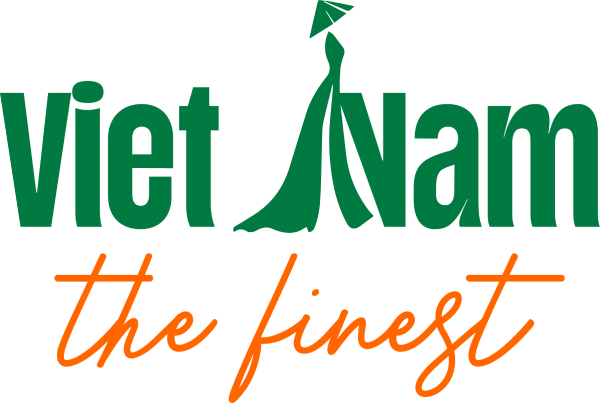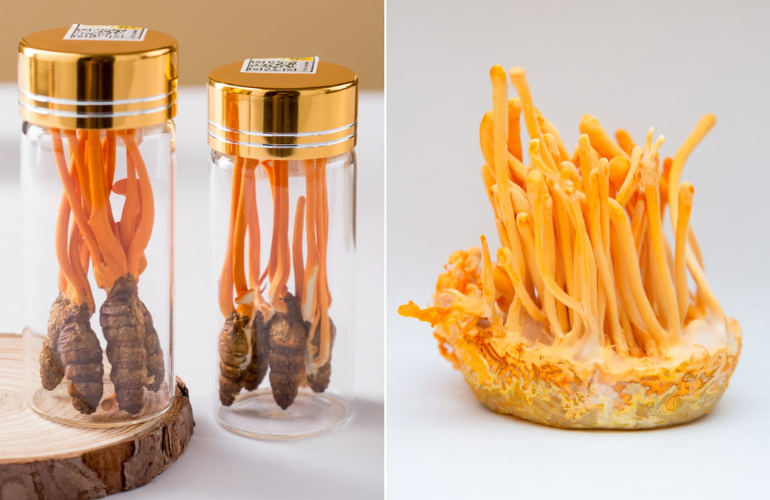Things to know about artificial Cordyceps flowers
Dried Cordyceps flowers (artificially cultivated Cordyceps) are grown in many countries such as Vietnam, South Korea, Japan, and others. Among these, artificial Cordyceps flowers from South Korea stand out with significantly higher nutritional content. Currently, Cordyceps flowers are being widely sold on the market. Therefore, it is essential to choose reputable suppliers to ensure quality products with clear origins. What are artificial Cordyceps flowers? Artificial Cordyceps flowers are cultivated in nutrient-rich substrates similar to the natural environment of Cordyceps. These are referred to as artificially cultivated Cordyceps. This type of Cordyceps flower has been certified for its high nutritional value, offering numerous health benefits. The two common forms of artificially cultivated Cordyceps currently available on the market are: Biomass form (cultivated on substrates) Parasitic form (cultivated on insect larvae). The main components include: cordycepic acid, cordycepin, adenosine, hydroxyethin-adenosine, and hydroxyethyl-adenosine-analogs. Due to its outstanding health benefits and increasing popularity, many unscrupulous sellers offer low-quality products with unclear origins for profit. Therefore, consumers should carefully choose reputable and authentic suppliers to ensure the best results. The effects of artificial Cordyceps flowers Although not as beneficial as natural Cordyceps, dried artificial Cordyceps flowers still offer numerous health benefits, with the most important advantage being their affordable price. Below are the benefits provided by dried Cordyceps flowers. Improving the immune system Cordyceps flowers, rich in nutrients, have the ability to stimulate phagocytosis and increase the production of monocytes. This supports and enhances the immune system, helping to prevent minor illnesses such as headaches, runny noses, and sneezing. Additionally, regular daily use boosts the body’s production of adenosine triphosphate molecules, which are highly beneficial for muscle activity. Powerful antioxidant properties Research indicates that the potent antioxidant content in Cordyceps flowers can combat aging, promote a rosy complexion, and extend youthfulness. The antioxidants also balance free radicals in the body, preventing the formation of cancerous cells and tumors Improving and preventing respiratory diseases One of the most significant effects of Cordyceps flowers is their ability to improve and prevent respiratory diseases such as asthma, shortness of breath, lung nourishment, pulmonary embolism, and pneumonia. Thanks to the active compound Cordycepin found in Cordyceps, regular use can eliminate two dangerous bacteria that cause pneumonia….. Tuberculosis and Mycobacterium The hormone Adrenaline in Cordyceps flowers promotes oxygen transport to the brain and other organs, reducing symptoms like fatigue and stress. Cancer prevention Several studies have shown that consuming Cordyceps flowers can help prevent and slow the growth of malignant cells and tumors. Additionally, they can reduce the side effects of radiation and chemotherapy, particularly the decrease in white blood cell count. Supporting blood sugar reduction and cardiovascular health Regular use of Cordyceps can help lower blood sugar levels in diabetic patients by increasing insulin sensitivity and improving the body’s glucose tolerance. Additionally, this product is effective in supporting, preventing, and enhancing cardiovascular health. Comparative studies show that individuals who use Cordyceps flowers have a lower incidence of cardiovascular diseases such as atherosclerosis, blood vessel blockage, strokes, and cerebral vascular accidents compared to those who do not use them. Enhancing sexual health Another benefit of Cordyceps flowers is improving sexual function in both men and women. For men, sexual health often declines after the age of 35. Regular use of Cordyceps flowers can improve sexual performance and extend intimacy duration. Moreover, it helps increase sperm count, improve sperm quality, enhance kidney function, and alleviate symptoms like fatigue, back pain, kidney weakness, and other related issues. Who should and should not use Cordyceps flowers Although Cordyceps flowers are rare and valuable natural herbs that are beneficial for health, not everyone is suitable for their use. Who should use Cordyceps flowers: Elderly individuals with weak physical conditions, poor appetite, or those recovering from illness who need to improve their health quickly. People with sleep disorders, such as restless sleep or frequent waking during the night. Those who frequently take medications that increase liver enzymes and strain kidney filtration. Individuals with reduced or weak sexual health who need improvement. People who frequently fall ill or have a weak immune system that requires enhancement. Who should not use artificial Cordyceps flowers: Individuals with autoimmune diseases such as multiple sclerosis or rheumatoid arthritis. People who are about to undergo surgery. Pregnant women, breastfeeding mothers, or those who are sensitive or allergic to the components of Cordyceps flowers. Where to buy dried Cordyceps flowers from reputable sources? To purchase authentic products with clear origins, it is essential to buy from trusted sources to avoid “losing money and compromising health.” Be cautious of cheap artificial Cordyceps flowers being widely sold on the market. As demand for these products grows, many suppliers and agents offer Cordyceps flowers to meet customer needs. However, there are also many sellers offering products with unclear origins. Therefore, consumers should thoroughly research before making a choice. Currently, one product that is trusted by many users nationwide is dried Cordyceps flowers distributed by Trung Nhân Cordyceps. This product meets quality and safety standards and offers significant health benefits. To purchase authentic products, customers can contact us directly via our hotline: 0906 750 776 for free 24/7 consultation. Additionally, you can purchase directly from our partner agents.


